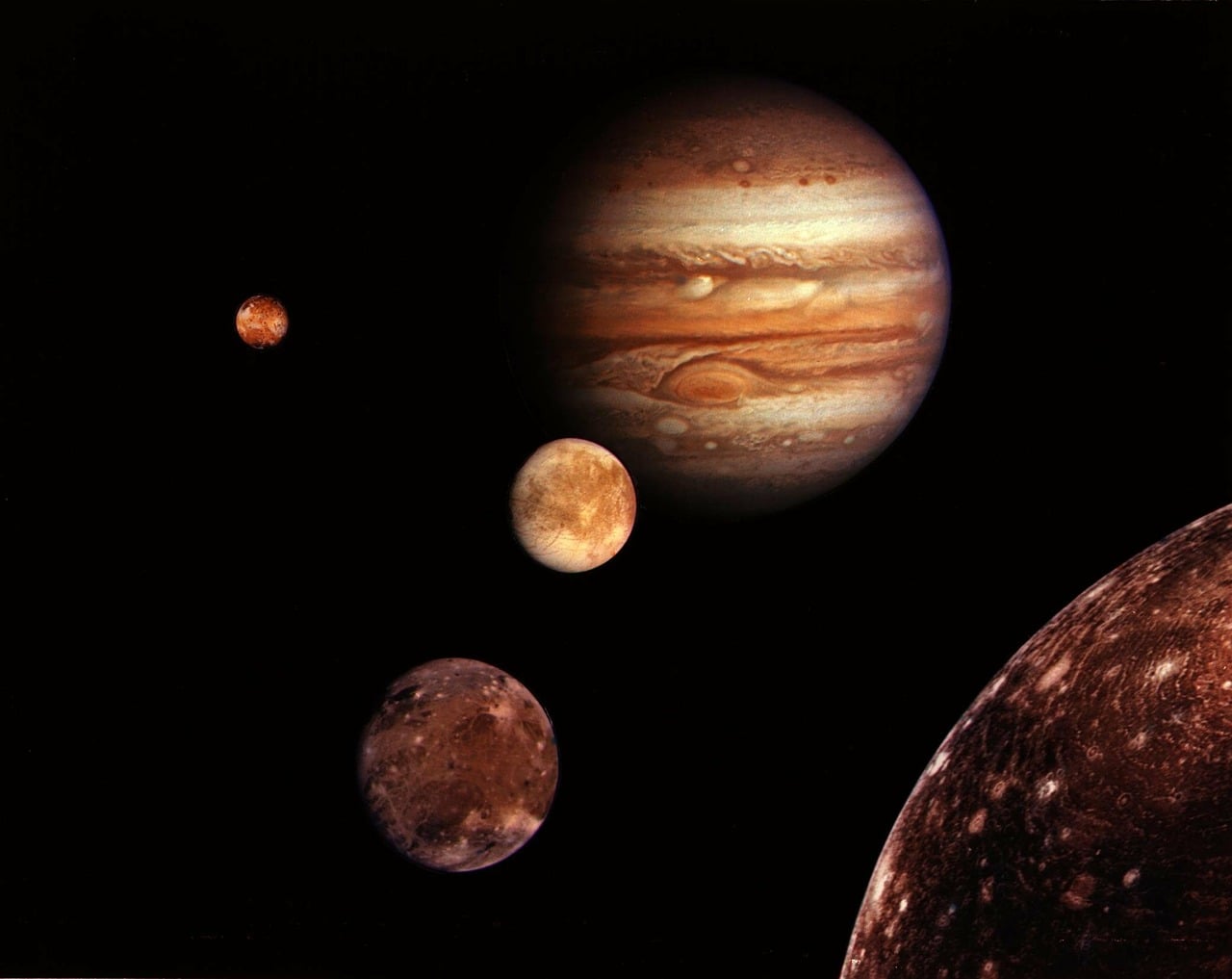While astronomy lovers and stargazers enjoy the month of Jupiter’s opposition and being quite close to Earth, scientists have detected a table salt compound on Jupiter’s moon Europa. Table salt is also known as the main component of sea salt.
Researchers at Caltech and NASA’s Jet Propulsion Laboratory (JPL) used visible light spectral analysis to discover a texture of yellow color visible on Europa’s surface, which actually turns out to be sodium chloride or table salt. The salty subsurface ocean of Europa seems to be similar to Earth’s oceans more than was previously thought. Their findings were published in Science Advances.
Scientists learned that Europa is covered by salty liquid water that is covered by an icy shell based on the data gathered by the Voyager and Galileo spacecraft during their flybys. The Galileo spacecraft was equipped with an infrared spectrometer which could learn about the composition of the surface. It discovered water ice and something that resembled magnesium sulfate salts, similar to Epsom salts which are used in bath salts.
“We thought that we might be seeing sodium chlorides, but they are essentially featureless in an infrared spectrum,” Mike Brown, the Richard and Barbara Rosenberg Professor of Planetary Astronomy at Caltech and co-author of the paper said in a statement.
Kevin Hand at JPL used ocean salts in the JPL laboratory which mimic the conditions on Europa, and blasted them with radiation, and found some new features in the visible light spectrum which happen following the radiation process. He concluded that Jupiter’s moon Europa has salts that change color from the radiation, which can be identified from a visible light analysis.
“Sodium chloride is a bit like invisible ink on Europa’s surface. Before irradiation, you can’t tell it’s there, but after irradiation, the color jumps right out at you,” Hand said.
“No one has taken visible wavelength spectra of Europa before that had this sort of spatial and spectral resolution. The Galileo spacecraft didn’t have a visible spectrometer. It just had a near-infrared spectrometer,” said Caltech graduate student Samantha Trumbo, the lead author of the paper.
Using the Hubble Space Telescope, Brown and Trumbo were able to find absorption of the visible spectre at 450 nanometers which matched the table salt compound. That said, the yellow color of Tara Regio on Jupiter’s moon Europa shows the presence of irradiated sodium chloride.
“We’ve had the capacity to do this analysis with the Hubble Space Telescope for the past 20 years,” Brown says. “It’s just that nobody thought to look.”
Scientists still can’t confirm that the table salt compound is the result of the subsurface ocean that exists on Europa. The purpose of this study was to reevaluate the geochemistry of Europa, and find more of the compounds which could hint at its ocean’s origin.
“Magnesium sulfate would simply have leached into the ocean from rocks on the ocean floor, but sodium chloride may indicate that the ocean floor is hydrothermally active,” Trumbo says. “That would mean Europa is a more geologically interesting planetary body than previously believed.”





